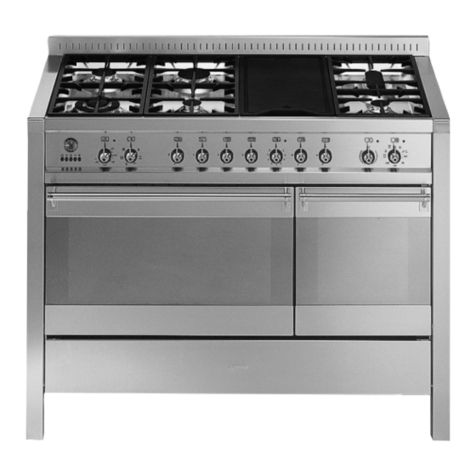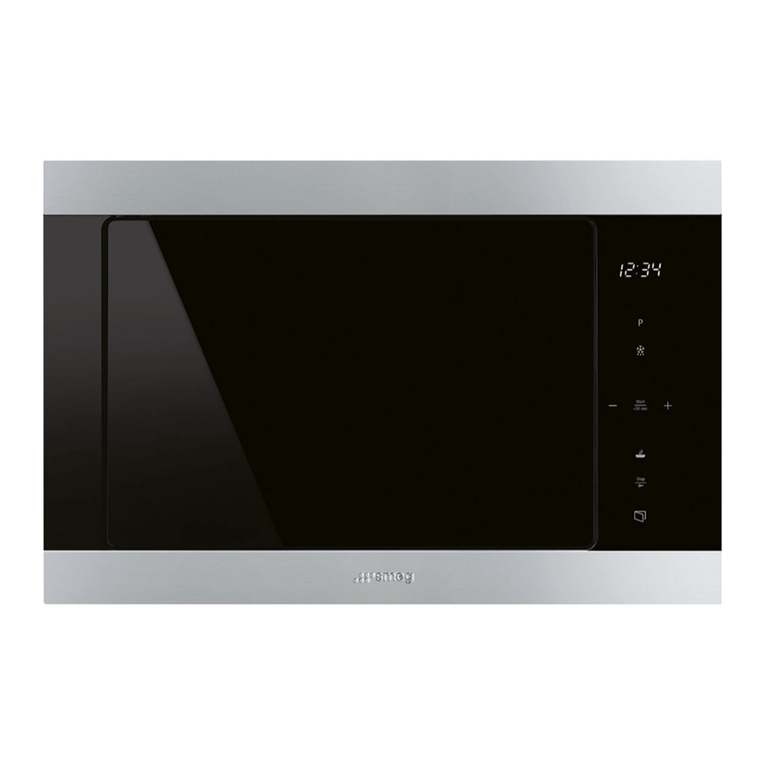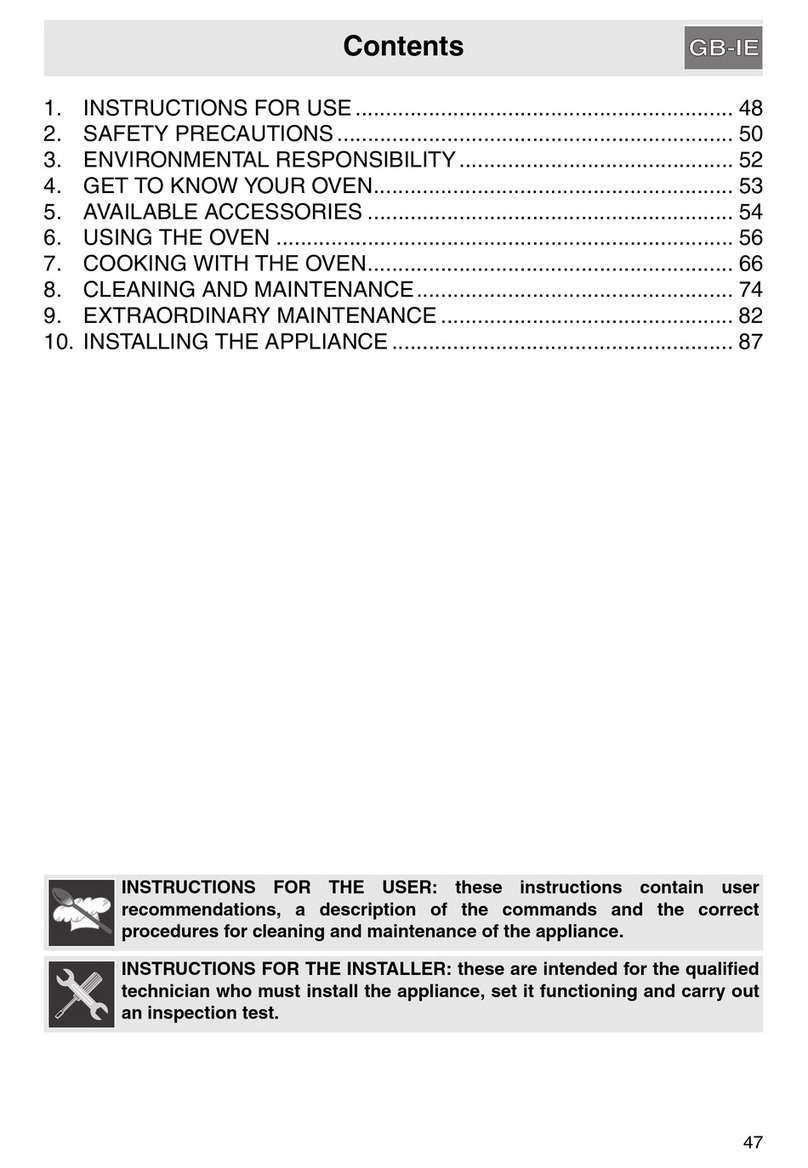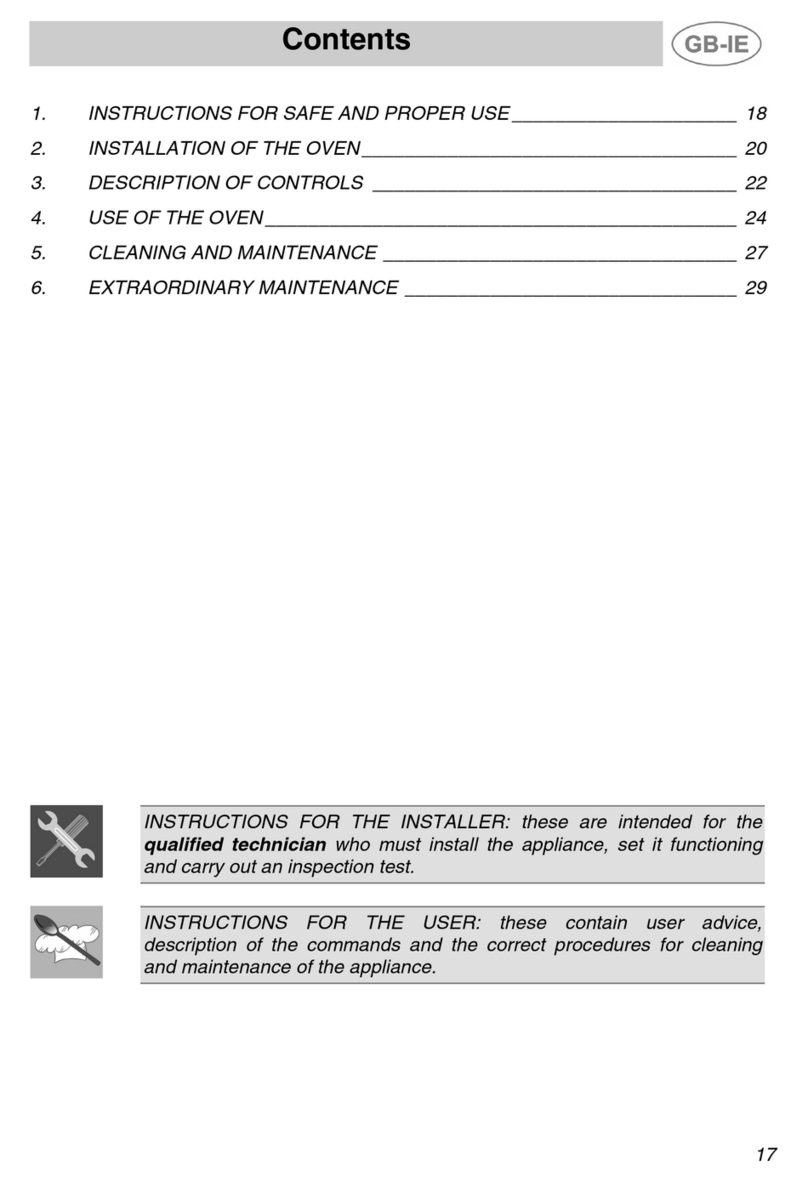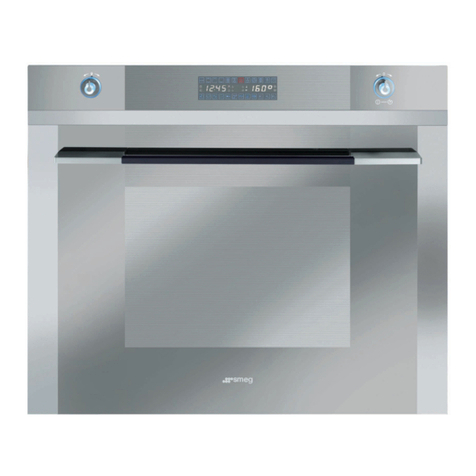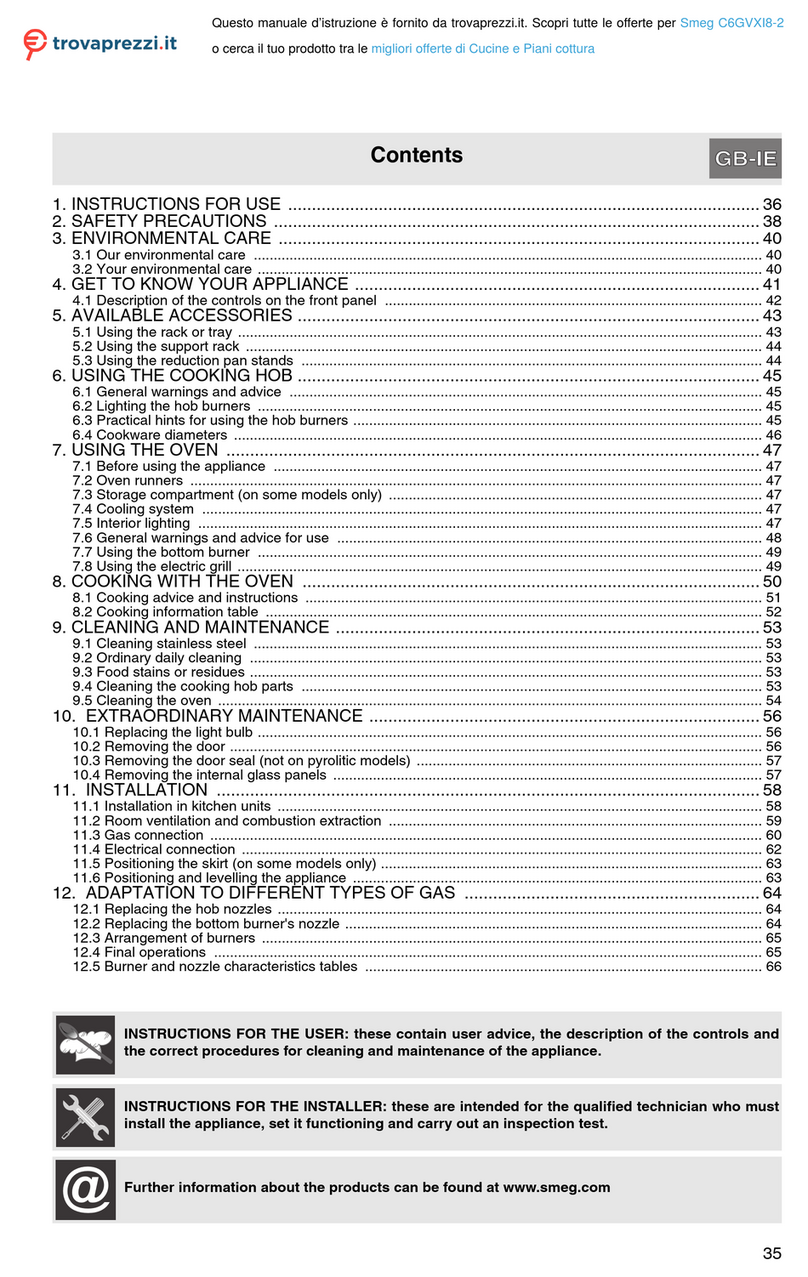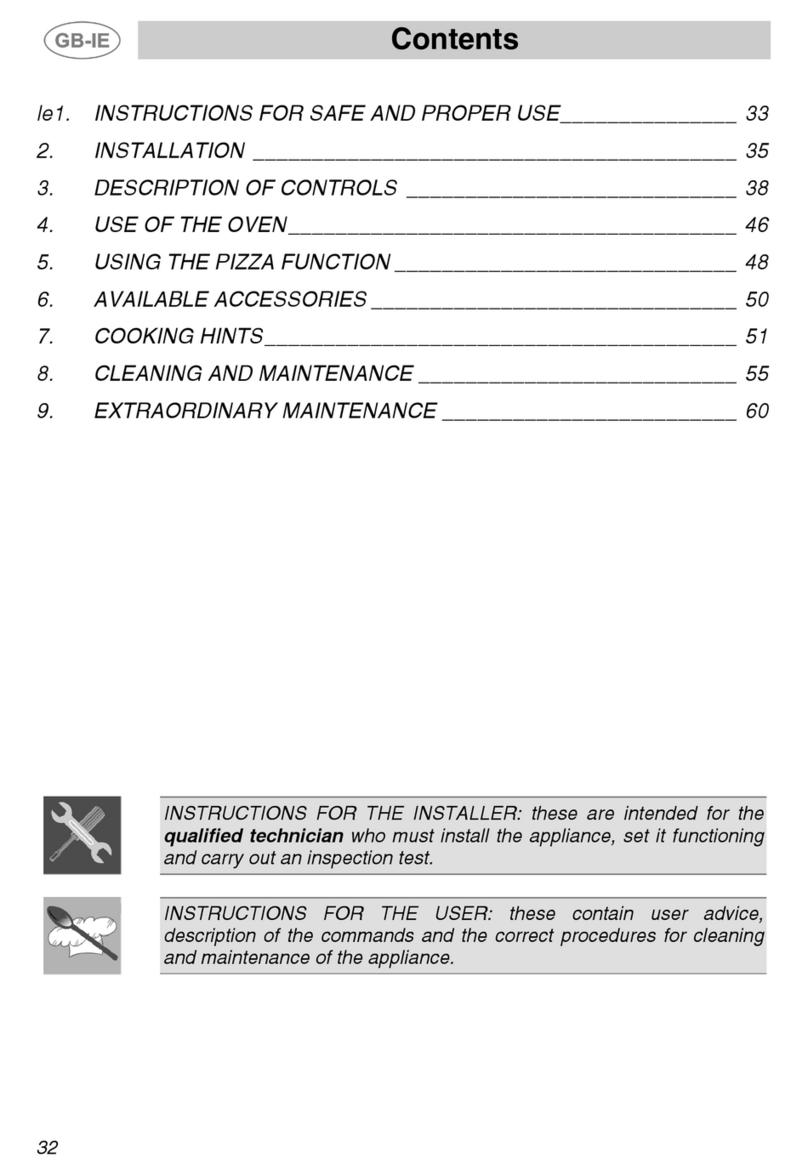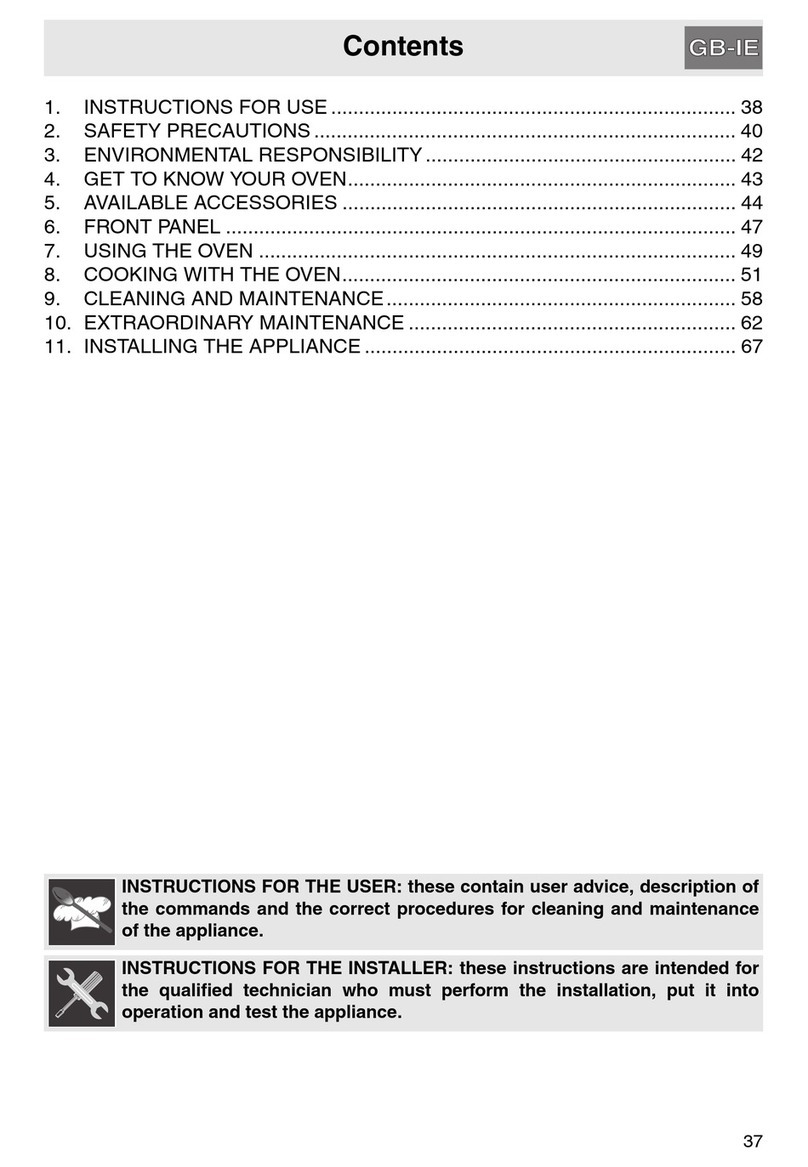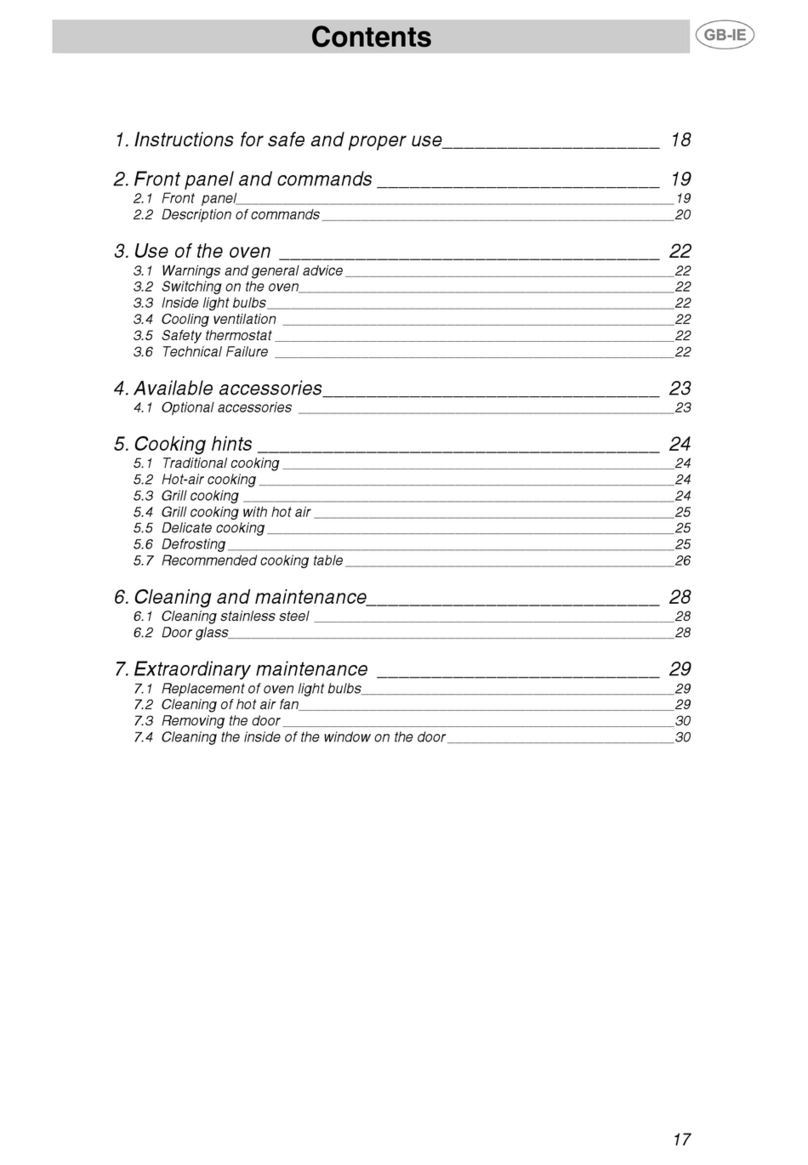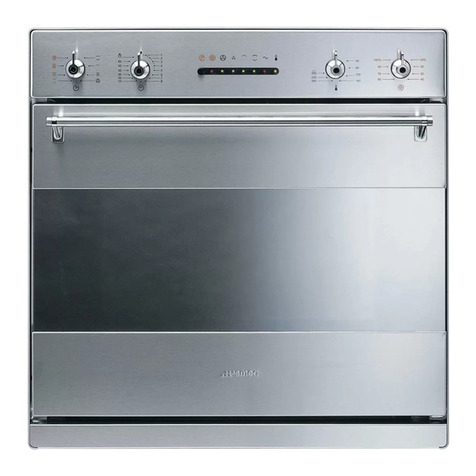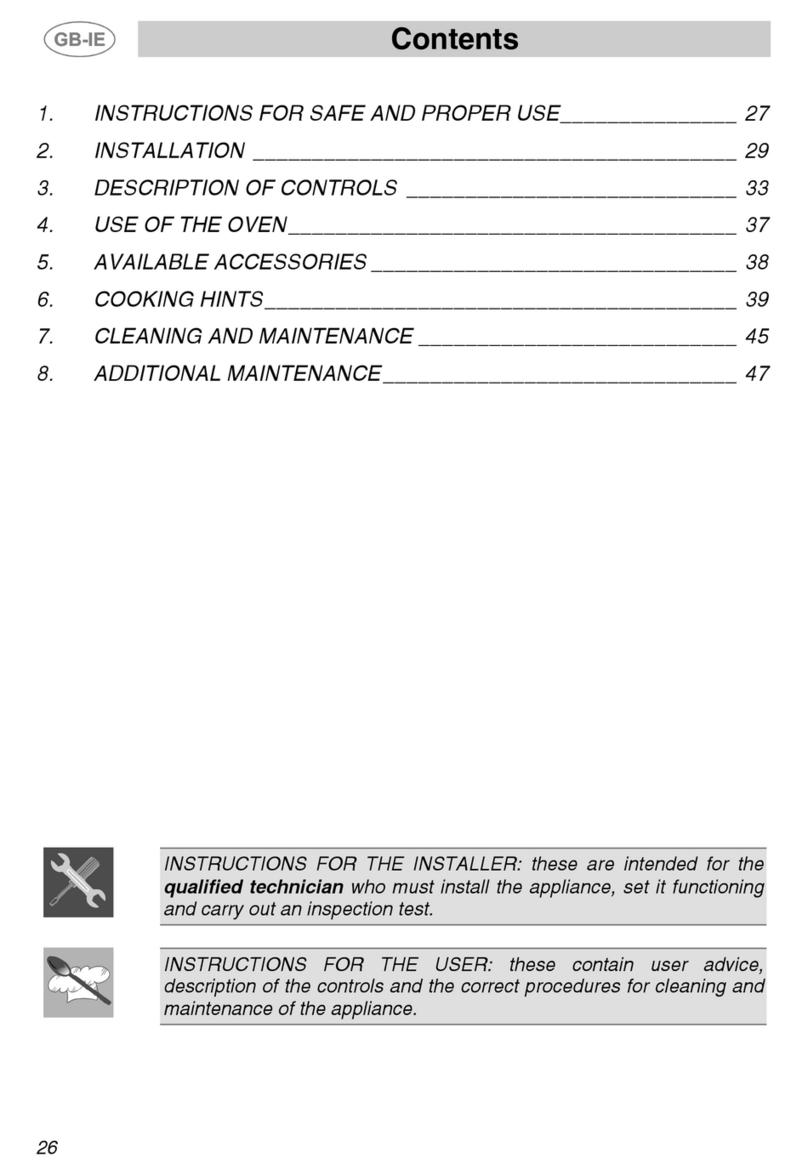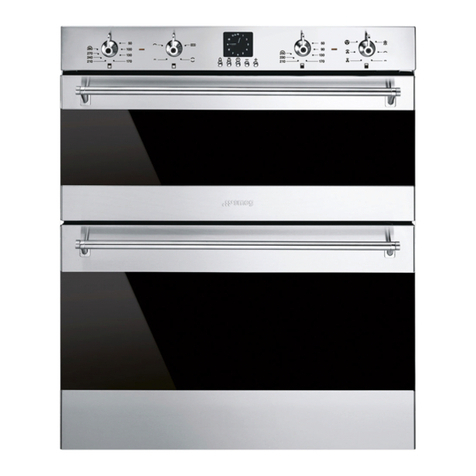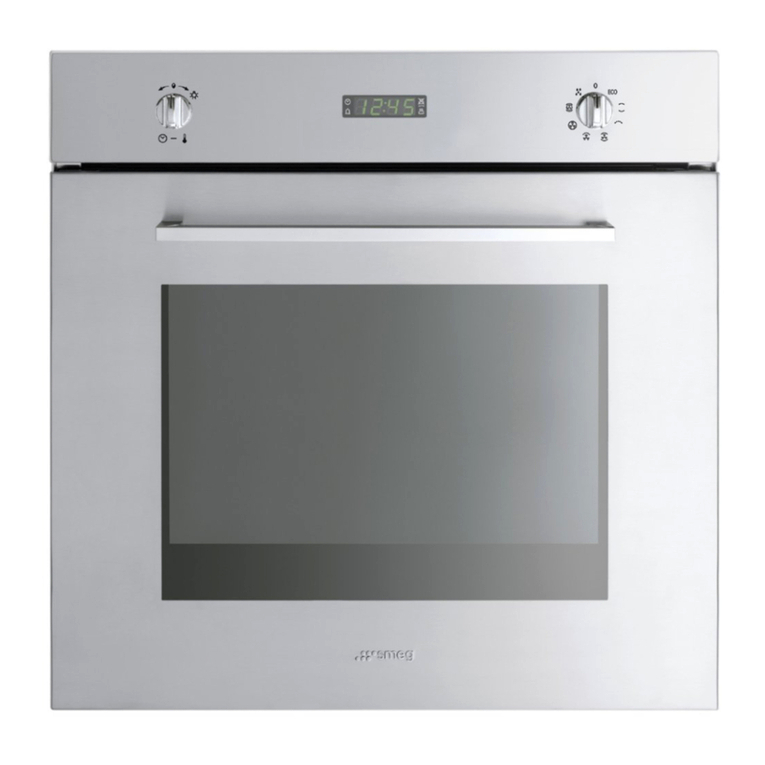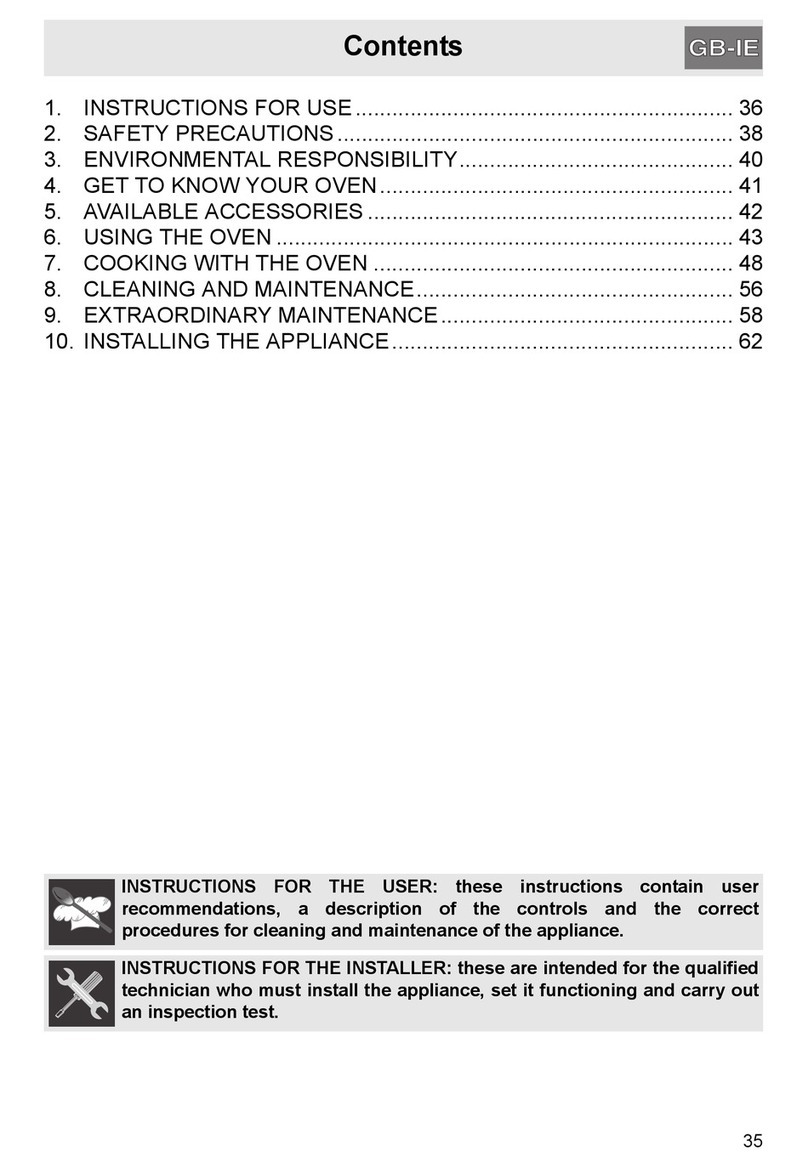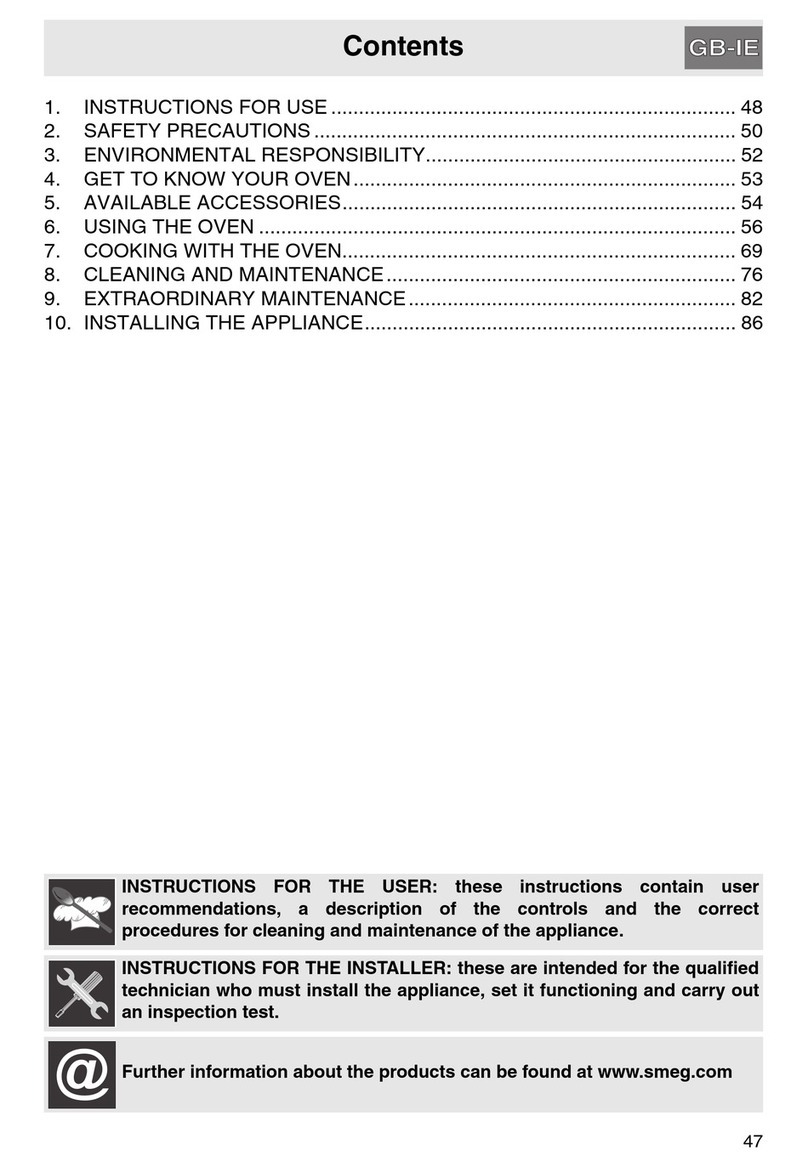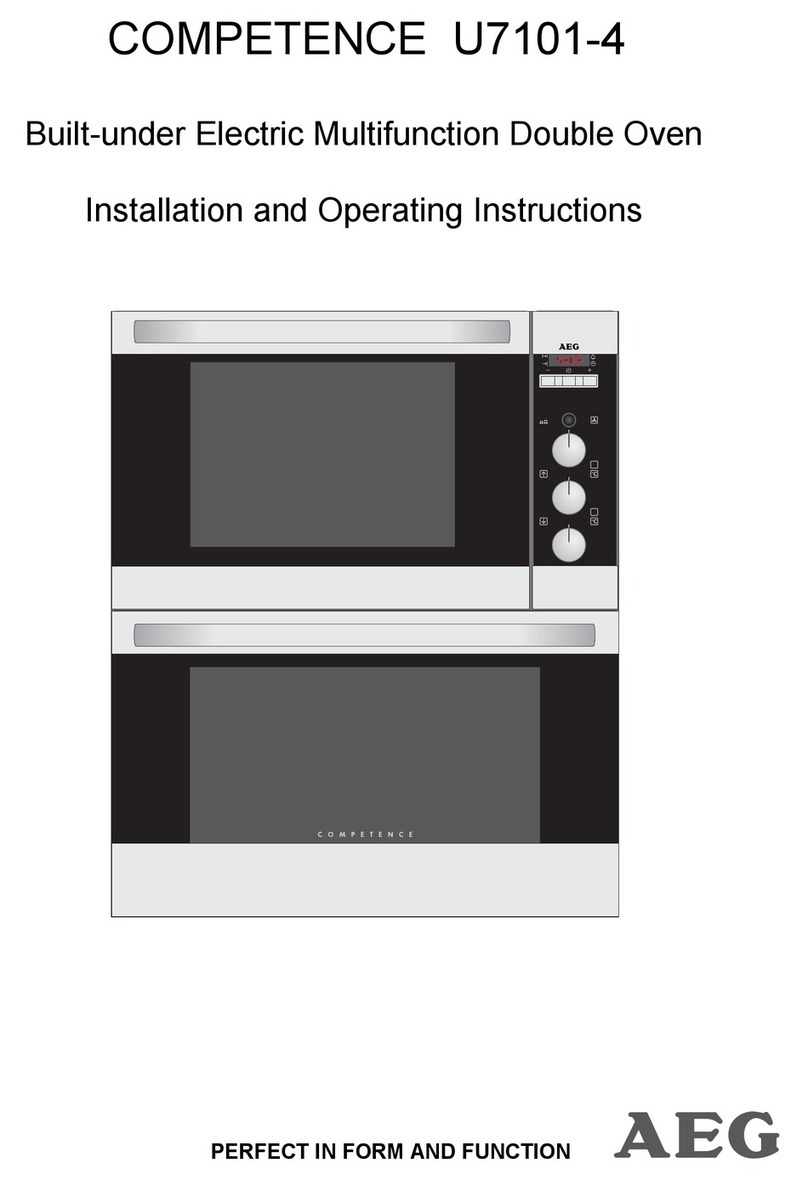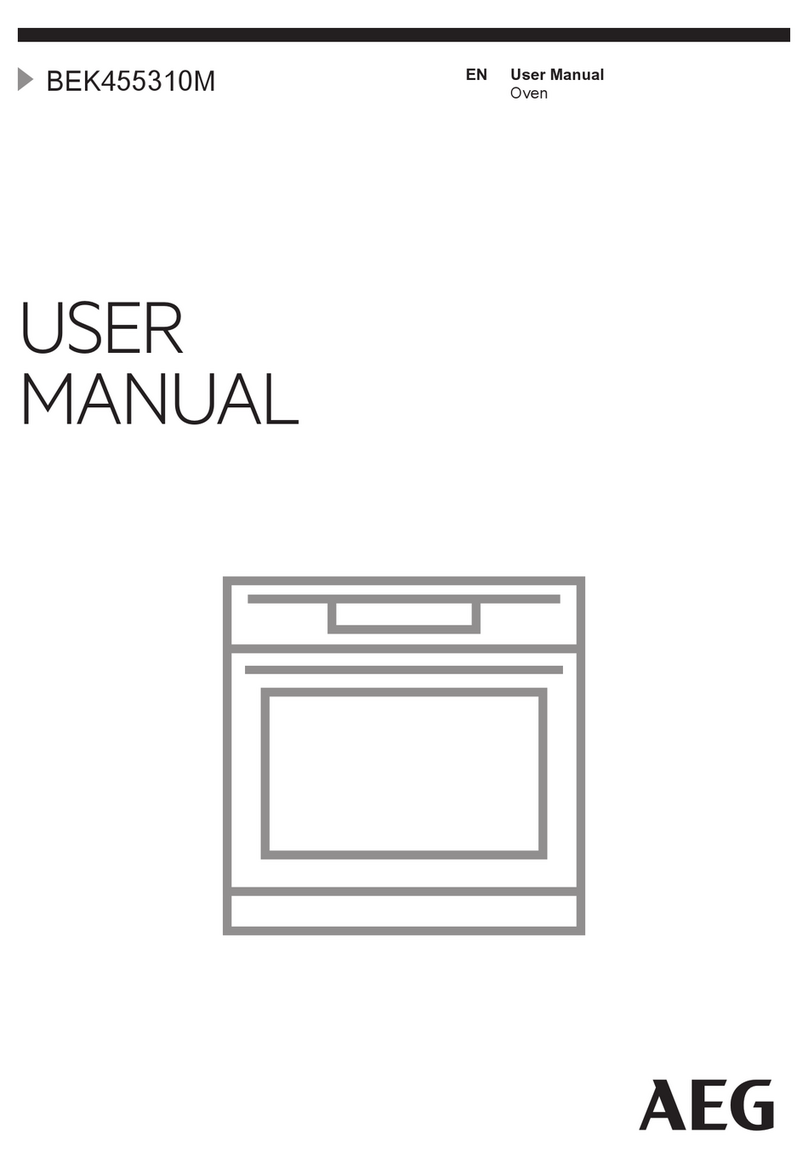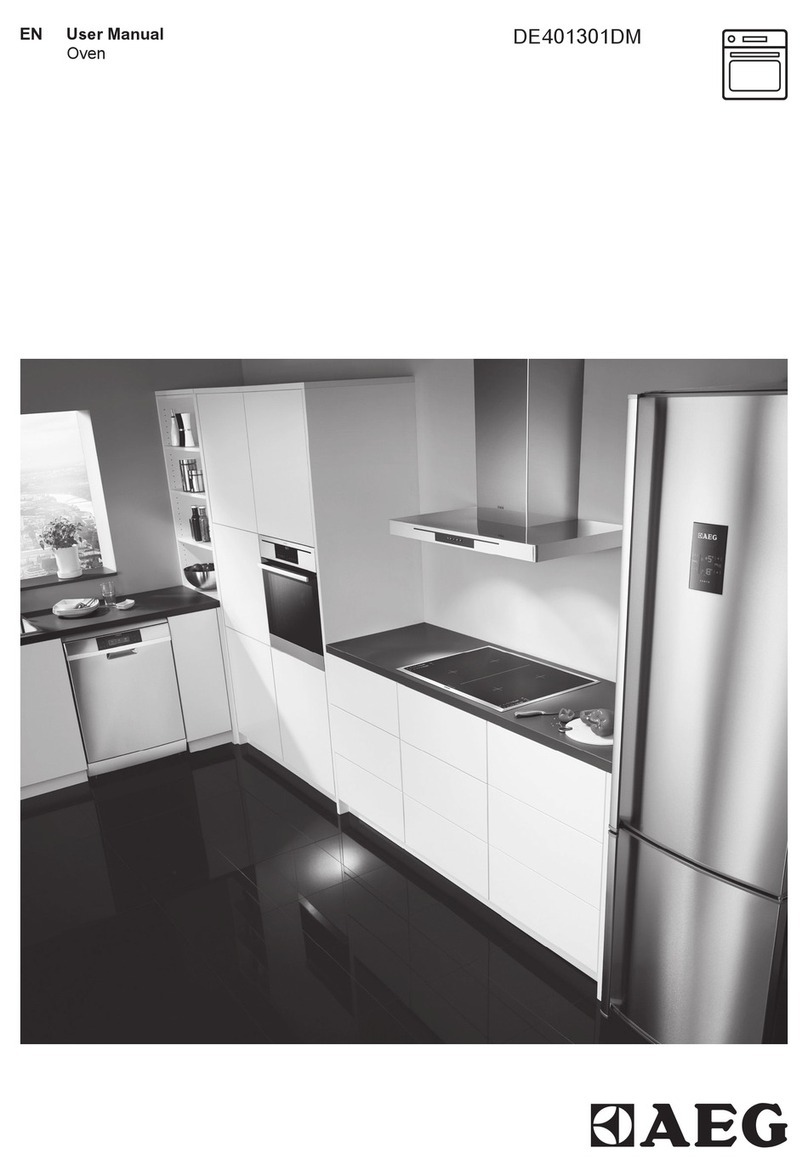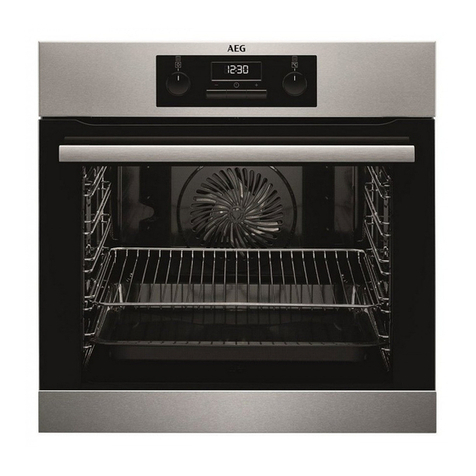Table of Contents
1. IMPORTANT SAFETY INSTRUCTIONS ................................................................................. 4
2. INSTALLATION ....................................................................................................................... 5
2.1 Oven Use ........................................................................................................................................................ 5
3. GUIDE TO OVEN CONTROLS ............................................................................................... 8
3.1 Front panel ...................................................................................................................................................... 8
3.2 Description of controls ..................................................................................................................................... 8
4. ELECTRONIC ANALOG CLOCK .......................................................................................... 10
5. AVAILABLE ACCESSORIES ................................................................................................ 13
6. USING THE OVEN ................................................................................................................ 14
6.1 Warnings and general advice for use ............................................................................................................ 14
6.2 General description ....................................................................................................................................... 14
7. FUNCTIONS GUIDE .............................................................................................................15
8. COOKING SUGGESTIONS AND TIPS ................................................................................. 17
8.1 Suggestions on using the accessories: ......................................................................................................... 17
8.2 General suggestions: .................................................................................................................................... 17
8.3 Cooking hints ................................................................................................................................................ 18
8.4 Cooking tables: ............................................................................................................................................. 21
9. CLEANING AND MAINTENANCE OF THE OVEN ............................................................... 23
9.1 Cleaning stainless steel ................................................................................................................................ 23
9.2 Regular daily cleaning ................................................................................................................................... 23
9.3 Food stains or residues ................................................................................................................................. 23
9.4 Cleaning the inside of the oven ..................................................................................................................... 23
9.6 Self cleaning: automatic oven cleaning ......................................................................................................... 24
9.7 Before starting the automatic self cleaning cycle .......................................................................................... 24
9.5 Cleaning the door glazing ............................................................................................................................. 24
9.8 Setting the self cleaning cycle ....................................................................................................................... 25
9.9 During and after the self cleaning cycle ........................................................................................................ 25
9.10 Setting the self cleaning cycle with delayed start ........................................................................................ 25
10. EXTRAORDINARY MAINTENANCE ................................................................................... 26
10.1 Replacing oven light bulbs .......................................................................................................................... 26
10.2 Removing the oven door ............................................................................................................................. 26
10.3 Removing the internal glass panes ............................................................................................................. 27
10.4 What to do if... ............................................................................................................................................. 29
NOTE: THIS APPLIANCE MUST BE INSTALLED SOLELY AND EXCLUSIVELY BY A QUALIFIED
TECHNICIAN. ANY TECHNICAL PROCEDURES MUST BE CARRIED OUT BY AN AUTHORIZED
TECHNICIAN.
INSTRUCTIONS FOR THE USER: these instructions contain user advice, a description of the controls
and the correct procedures for cleaning and maintenance of the appliance.
3
